Preservation Alliance of West Virginia Announces “Saving Historical Places Grant” Recipients3/3/2021 The Preservation Alliance of West Virginia announced that the Pence Hotel, in Mercer County, and the Wyoming Hotel, in Wyoming County, are this year’s first recipients of its Saving Historical Places Grants. The program is the Alliance’s initiative to save historical places in the Mountain State by funding emergency stabilization work and jump-starting building preservation projects with pre-development funds.
The Pence Hotel, a contributing structure to the Bramwell Historic District and independently listed on the National Register of Historic Places, is one of the first buildings visitors see when entering Bramwell. It will receive Saving Historical Places Grant funds for much needed emergency stabilization work including wall stabilization; the first of four planned phases to restore the building. “Once restored, the hotel will host a Company Store on the ground level, and provide an economic boost to the town and region” explained Gene Buckner, President of the Mercer County Commission. The second structure to receive assistance from the Saving Historical Places Grant is the Wyoming Hotel in Mullens, built in 1918 and listed on the National Register of Historic Places. Funds will be used by nonprofit organization Peacework Development Fund to save the building from imminent danger of collapse by removing a fire escape. Future redevelopment plans for the hotel building are mixed-use for commercial/residential purposes to cater to outdoor recreation tourists and serve as a nod to the building’s history. “The Wyoming Hotel was a source of community pride and community history. Through the years many people stayed in the hotel, including JFK running for president in 1960, Franklin Roosevelt, Jr., rumors of Babe Ruth to everyday people coming to Mullens for work or to attend ball games or participate in horse shows. Saving it would again lift community spirits and potentially be a centerpiece for rural economic redevelopment,” said Samuel E. Webster, the owner of the building. “The Saving Historical Places Grant funds are being used to save these buildings from collapse. We are delighted to be able to help save these important historical resources that tell the story of our coal heritage, and we are excited that there are active community efforts to rehabilitate these buildings. However, we know that there is a long road ahead for these buildings to be fully functioning as we hope. We urge anyone who is interested in saving these buildings to consider donating to these projects as well,” said Danielle Parker, Executive Director of the Alliance. The Preservation Alliance of West Virginia is the statewide nonprofit organization dedicated to historic preservation. The Alliance continues to fundraise for its Saving Historical Places Grant program and is accepting donations for this program. Donations of $500 or more may be eligible for Neighborhood Investment Program tax credits. Donate here! For more information, call 304-345-6005.
1 Comment
Three interesting historic properties have become available in Lewisburg’s Downtown Historic District. A Sears kit house that has been on PAWV’s endangered list for several years, is available for free to someone who will move or disassemble it. Built in the early 1920s, it is an early version of The Westly, one of Sears most popular homes. A professional house mover has checked out the house and is confident it can be readily moved. Across the street from New River Community and Technical College and next to the Old Stone Church is McElhenney Lodge. It provided a dormitory, faculty housing, offices and a recreation center for Greenbrier College. The oldest part of the complex is a 19th century brick house with cement block additions. The third offering is the old Greenbrier Dairy building that housed a True Value hardware store for many years. The property includes a large lot and a warehouse in central Lewisburg. Each of these properties should qualify for historic preservation tax credits. The Lewisburg Historic Landmarks Commission is involved in efforts to save and restore these buildings. More information is available by contacting Commissioner Skip Deegans at 304-646-8475 or [email protected].
The Preservation Alliance of West Virginia has announced that the Davis Coal and Coke Company Administrative Building just south of the historic River Street District of Thomas has been recognized as a significant endangered historic building for 2019.
It was placed on the National Register of Historic Places in 2011 because of its importance as the Tucker County headquarters of the company founded by legendary railroad and coal magnate Senator Henry Gassaway Davis from 1900 until 1950. The Alliance is adding it to the West Virginia Endangered Properties List because it has been sitting vacant since the 1980s and is structurally failing. In 1995, the City of Thomas assumed the building and has been able to maintain the exterior walls and roof but not the structural problems inside the building. The Friends of Blackwater took an interest in the building and has partnered with the City of Thomas and Vandalia Heritage Foundation to seek additional funding. The future is looking bright. In July 2019, the West Virginia State Historic Preservation Office granted $29,100 to Vandalia Heritage to replace joists on the first floor and repair a structural wall in the building. There are still many unknowns, and the Friends of Blackwater are looking to bring more attention to this important project by nominating it to the West Virginia Endangered Properties List. The current plan is for the City to enter into a long term lease with the Vandalia Heritage Foundation to redevelop the building, but no actuals plans are in place, making this project still unsecure. The Friends of Blackwater initiated this endangered properties recognition process on behalf of the City of Thomas and has solicited the assistance of the Preservation Alliance for historic preservation technical assistance, as well as applied for grant funding to develop an adaptive reuse plan for the building. The mostly likely redevelopment path for the building would be to have retail space on the main floor, with offices or residential space on the second floor and in the attic. You can donate to this project by visiting, https://saveblackwater.org/donate/. The West Virginia Endangered Properties List is a collection of historical resources in danger of being lost. The Preservation Alliance of West Virginia is the statewide nonprofit organization dedicated to historic preservation in our Mountain State. It maintains the West Virginia Endangered Properties List and administers the Preserve WV AmeriCorps program. For more information contact Danielle LaPresta Parker, 304-345-6005 [email protected] We very seldom ask you to support a particular historic preservation effort, as there are so many worthwhile and deserving projects in West Virginia, but we’re making an exception with this message for an Endangered Property. For 80 years the Homestead School and community center has been the beating heart of the Tygart Valley Homestead community in Randolph County, WV. Created by Franklin Roosevelt’s New Deal program to provide housing and work for unemployed coal miners and others who lost their jobs in the great Depression, the community helped people gain home ownership through sweat equity. Descendents of many of the original Homesteaders still live in the community today, and have for years supported the school through our Tygart Valley Homestead Association. The unique architecture and historic importance of the community led to its being listed on the National Register of Historic Places in 2004 as “Tygart Valley Homesteads Historic District.”
Declining enrollment and budgetary problems resulted in deferring much needed upkeep, and eventually led to the County Board of Education placing the Homestead School on its closure list. The Preservation Alliance of West Virginia in 2016 named the school a significant Endangered Property .A determined community effort led by the Tygart Valley Homestead Association convinced the Board of Education to rescind the closure decision, but shortly after this victory a freak windstorm damaged the school building to the point that the school system determined it was no longer safe for student occupancy. This was a major setback, but we of the Tygart Valley Homestead Association didn’t give up, and convinced the powers that be to turn the building over to us for a token payment. We managed to raise enough money to get the roof fixed, and have done major upgrades to the school’s electrical system, but now we are faced with a daunting project: bringing the school building back up to standard so it can continue to serve as a community center. The number one item on our priority list is to bring the restrooms up to modern standards – some of the 80 year old original fixtures are still in place. Donate at gofundme.com/homesteadcommunitycenter PAWV is accepting nominations for the 2018 West Virginia Endangered Properties List. Nomination forms are available here (MSWord). Nominations are due at 5pm on Friday, March 16, 2018, to [email protected].
Guidelines for the nomination process include the following: Criteria 1)There must be a degree of endangerment from one or more of the following:
2) The property must be listed in, or be eligible for, the National Register of Historic Places. • Properties not listed in the National Register of Historic Places (as either an individual site or a contributing structure in a historic district) must submit a completed Historic Property Inventory Form to the WV State Historic Preservation Office to determine eligibility. The form is available at: http://www.wvculture.org/shpo/forms.html • Once the property is deemed eligible for the National Register of Historic Places, please submit both the Historic Property Inventory Form and the documentation of eligibility as part of your Endangered Properties Nomination. 3)There must be evidence of significant local support for preservation of the property, including three (3) letters of support. Process
Timeline March 16 - Application deadline at 5:00pm to [email protected] March 23 - If you have not received a confirmation from our office that your application has arrived, call 304-345-6005 to inquire. March 30 - PAWV Endangered Properties committee meets to review nominations- You may be contacted by PAWV staff to schedule an initial site visit as part of the review process, or to request clarifications or additional materials. Please make sure there is someone at your contact number/email to receive and answer questions or provide materials, if necessary. April 27 - Applicants will be notified of their status in regard to the nomination. May - Special announcement and press conference for the West Virginia Endangered Properties List at a date and location to be determined. The West Virginia Endangered Properties List is a collection of historic resources that are in danger of being lost, although they are good re-use candidates for their communities. The goal of this program is to encourage property owners to rehabilitate their properties while preserving our shared heritage. The alliance revived its endangered list program in 2009 with a competitive nomination process and with technical assistance provided to the stewards of the selected properties. Technical assistance includes on-site visits from experts, guidance in preservation projects and assistance in organizing clean-up days, hands-on workshops, or other skilled preservation activities. Learn more about the properties that were formerly on the endangered list but have graduated to saved at http://www.pawv.org/endanger/category/status-saved. To talk more about this program, contact Anna Lynn Stasick at [email protected] or by calling 304-685-8119. Updates compiled by Mercy Klein, Preserve WV AmeriCorps Each year, PAWV announces the West Virginia Endangered Properties List – a collection of historic resources at risk of being lost to neglect, demolition, and other human and environmental factors. PAWV works with stewards of each property to help improve and save the property so it can be reused. Preservation projects usually take several years to complete, and they need continued support after the initial listing. In the spirit of “Where are they now” updates, PAWV is doing a post about how the endangered properties’ projects are progressing. Projects featured in this post (listed alphabetically) include Blue Sulphur Springs Pavilion, Homestead School, the historic Jenkins House, Old Esso Station, and Old Fayetteville High School.
The engineering design for the new drainage system was approved by the Army Corps of Engineers and the WV Division of Natural Resources. All the excavation work conducted in the interior pavilion and for the drainage system was overseen by an archaeologist. During the interior pavilion excavation, the original wood floor of the pavilion was located – as well as what is believed to be the original spring drain. However, the wood floor was left covered as it was below the level of the planned excavation. Fundraising for the next phase of restoration will begin in 2017. The next phase will include repairing and waterproofing the foundation, installing a new floor and a roof, and other finishing touches. There are also hopes to get the community, politicians, and organizations involved in developing a “springs trail” in the area. Friends of the Blue and GHS have worked tirelessly at making this restoration project possible, and their efforts were recognized in September 2016 by the Preservation Alliance of West Virginia with its annual Preservation Persistence Award. https://www.facebook.com/BlueSulphurSprings Homestead School, Dailey, Randolph County – 2016 List In May of 2016, Homestead School was one of two schools under consideration for closure by the Randolph County Board of Education (BOE) – due to financial constraints, several failed school levies, a decrease in student enrollment, and costly structural and maintenance issues. During numerous BOE meetings and public hearings, many community members urged the Board to reconsider the Homestead School closure because of the building’s historical value, as well as its value as a community centerpiece. Finally, in December, after a four-hour session with community members and school employees (which included reviewing materials and answering questions presented by the Superintendent of Schools and BOE staff), the BOE unanimously voted to keep Homestead School open.
Old Esso Service Station, Fayetteville, Fayette County – 2015 List The Old Esso Service Station’s owners submitted a National Register of Historic Places (NRHP) nomination for the building in November 2016. The status of the nomination (which was researched and written by PAWV’s Preserve WV AmeriCorps member at National Coal Heritage Area) is currently pending. If an NHRP listing is awarded, the owners will apply for a Historic Preservation Development Grant through the WV Division of Culture and History. If they receive the grant, they plan to utilize the funds to replace the roof; they have already obtained estimates for its replacement.
The Preservation Alliance of West Virginia is currently accepting nominations for the 2017 West Virginia Endangered Properties List. Nominations are due February 15, 2017, and the alliance plans to make the announcement for the 2017 Listing near the beginning of May 2017 in celebration of National Historic Preservation Month. There is special criteria to be identified as a WV Endangered Property. Each property must be listed or eligible for listing in the National Register of Historic Places; suffer from a demonstrable preservation emergency; and maintain owner and local support for the re-use of the property in the respective community. Owner support is necessary because it’s the first step to ensuring the preservation process begins. It is PAWV’s goal to encourage owners to turn these properties into viable contributors to WV’s economy. Properties that were formerly on the endangered list but have graduated to saved include the First Ward School in Elkins and the Quarrier Diner in Charleston. We hope you will take a look around your community for an historic building that is in need of attention, rehabilitation, speaks to the history of the community, has great potential to be re-purposed to serve community needs, and is of more value saved than destroyed. If you know of such a building, please consider taking the time to submit a nomination for the property. Nominations forms and additional information on Endangered Properties nominations can be found here. For more information on West Virginia Endangered Properties and a list of current Endangered Properties in West Virginia, please visit http://www.pawv.org/endanger.htm or contact PAWV’s Preserve WV AmeriCorps member, Mercy Klein, at [email protected].
Happy Retreat was named a West Virginia Endangered Property in 2010 after being threatened by demolition due to development pressures in the area. PAWV is excited to share the tremendous progress the Friends of Happy Retreat has made in the last year. It was listed as West Virginia’s first National Treasure under the National Trust for Historic Preservation. The National Treasures “program demonstrates the value of preservation by taking direct action to protect cherished places and promote their history and significance.” Fewer than 75 places in this nation have been selected as National Treasures. Other National Treasures include Nashville’s Music Row, Theodore Roosevelt’s Elkhorn Ranch, the Houston Astrodome, the Grand Canyon, the historic Woodlawn estate adjacent to Mount Vernon, and The National Cathedral in Washington, DC. Happy Retreat also demonstrated its value as a community resource this year as volunteers came together to host a highly-successful craft beer and music festival. Over 1,500 people braved the 94 degree heat to enjoy the day’s events. Happy Retreat is planning to host the same event in 2017.
Updates compiled by Mercy Klein, Preserve WV AmeriCorps Each year, PAWV announces the West Virginia Endangered Properties List – a collection of historic resources at risk of being lost to neglect, demolition, and other human and environmental factors. PAWV works with stewards of each property to help improve and save the property so it can be reused. Preservation projects usually take several years to complete, and they need continued support after the initial listing. In the spirit of “Where are they now” updates, PAWV is doing a post about how the endangered properties’ projects are progressing. Projects featured in this post (listed alphabetically) include the Ananias Pitsenbarger Farm, Wheeling’s Blue Church, Feagans Mill, 1400 Block of Wheeling’s Market Street, Margaret Manson Weir Memorial Pool, Staats Hospital, and the Tyler County “Poor Farm” Home.
“There is no other region in the country which contains such a wealth of original Washington family homes and history–and Happy Retreat is the crown jewel of them all,” said Robert Nieweg, Senior Field Director and Attorney of the National Trust for Historic Preservation. “We couldn’t be happier to work with the Friends to create an experience at such an important site that will draw more people, ensure its story is more broadly told and its long term future secured.”
Located in the Eastern panhandle region of West Virginia, Happy Retreat is the principal estate of the Washington family. Built in 1780 by Charles Washington, George Washington’s youngest brother, Happy Retreat was the foundation for the surrounding city of Charles Town. It is here where George Washington and his lifelong friend Dr. James Craik started their 680-mile trek out to the American west. Joel Achenbach’s 2005 book, The Grand Idea: George Washington’s Potomac and the Race to the West, details this ambitious journey. Happy Retreat is currently one of 40 sites along the 132-mile Washington Heritage Trail, a designated National Scenic Byway which runs from the “Gateway to West Virginia” at Harpers Ferry to points west – all within the national capital region. “Happy Retreat is a wonderful part of the nation’s history, where George Washington long ago came to launch his grand idea of exploration in a new America. Today, the Friends of Happy Retreat seek to restore the Happy Retreat mansion and property so that it can be a vibrant center of cultural life and community gatherings linking history, neighborhoods, greenspace, downtown Charles Town, and the broader tourism region,” says Walter Washington, President of the Friends of Happy Retreat. “We are confident that our partnership with the National Trust for Historic Preservation will help the national treasure of Happy Retreat again become a place for the grand idea of exploring creative opportunities.” In 2015, the Friends of Happy Retreat successfully saved Happy Retreat from being divided into 25 residential lots for new construction, and together with the city of Charles Town raised $775,000 towards the acquisition of the property. Although the immediate threat of demolition was avoided, Happy Retreat remains threatened until a sustainable new use is established and underway. The National Trust’s involvement at Happy Retreat provides an opportunity to show how creative, multipurpose uses of historic sites can create a roadmap for the long-term sustainability of these significant places. As a National Treasure, Happy Retreat will join the ranks of other shared use concepts such as National Trust historic site, Cooper-Molera Adobe in Monterey, California, which is currently being converted to accommodate a museum, a restaurant, and event facilities. In an effort to mitigate the pitfalls of traditional house museums, the National Trust and Friends of Happy Retreat intend for the property to be used continuously by the public as a center for community events, heritage tourism, arts, culture, and scholarship, ultimately becoming a centerpiece for the newly founded Washington Heritage & Cultural District. To learn more about the Happy Retreat National Treasure, visit www.savingplaces.org/happy-retreat About the National Treasures Program The National Trust for Historic Preservation mobilizes its more than 65 years of expertise and resources to protect a growing portfolio of over 80 National Treasures. Among them are threatened buildings; neighborhoods, communities, and landscapes that stand at risk across the country. Our National Treasures program demonstrates the value of preservation by taking direct action to protect cherished places and promote their history and significance. For more information, visit: savingplaces.org/treasures or follow @SavingPlaces and #SavingPlaces for updates. About the National Trust for Historic Preservation The National Trust for Historic Preservation is a privately funded nonprofit organization that works to save America’s historic places. For more information, visit www.preservationnation.org About the Friends of Happy Retreat The Friends of Happy Retreat is a nonprofit organization seeking to transform Charles Washington’s home, Happy Retreat, into a vibrant center of community and cultural life, linking neighborhoods, greenspace, and West Virginia’s broader tourism region. For more information, visit www.happyretreat.org |
News and NotesCategories
All
Archives
May 2024
Subscribe to our mailing list to receive e-news updates on historic preservation news and events in West Virginia.
|
Get Involved |
Programs |
Contact UsPreservation Alliance of West Virginia
421 Davis Avenue, #4 | Elkins, WV 26241 Email: [email protected] Phone: 304-345-6005 |
Organizational Partners:
© COPYRIGHT 2022 - PRESERVATION ALLIANCE OF WEST VIRGINIA. ALL RIGHTS RESERVED.



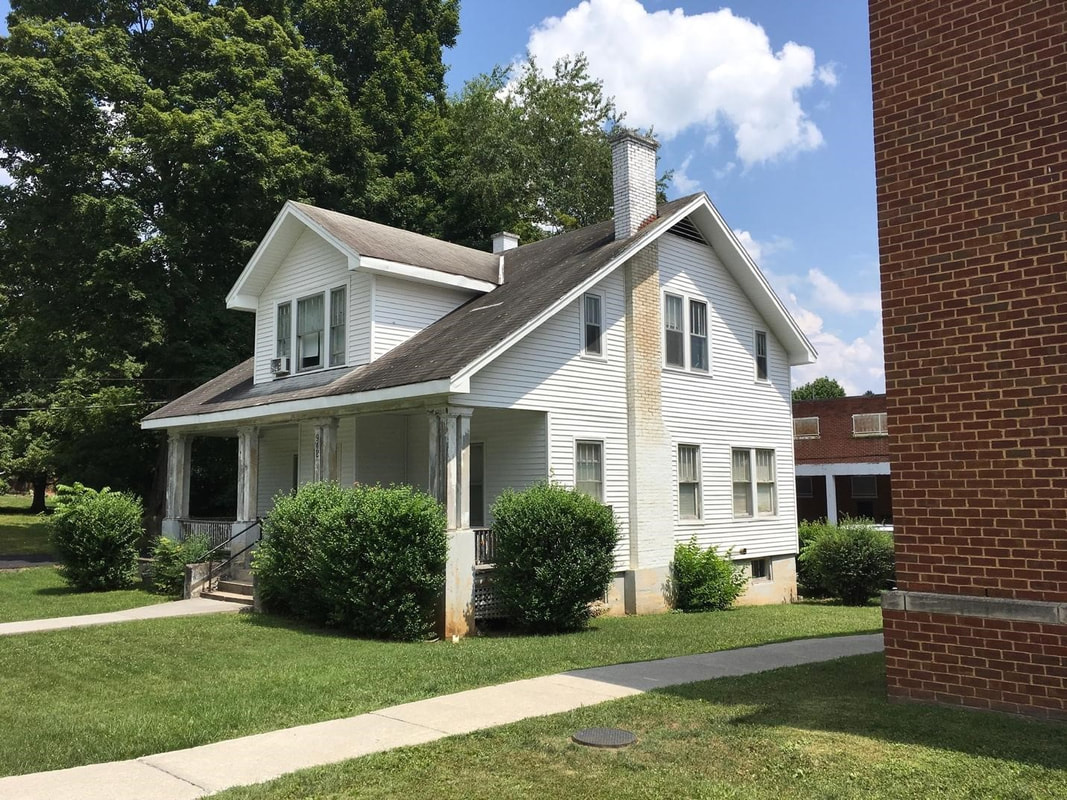
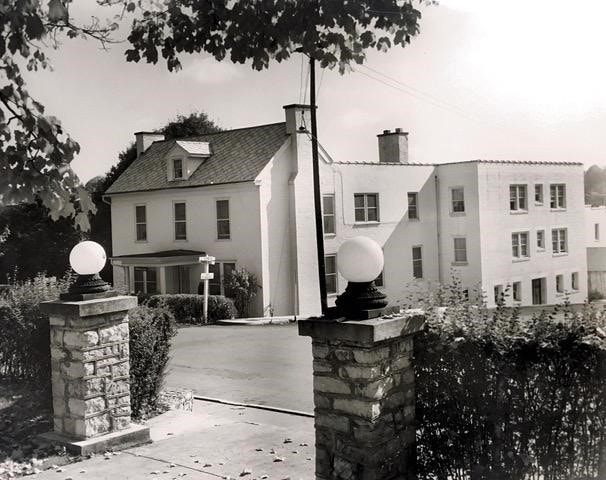




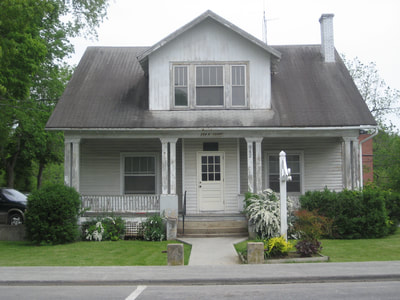







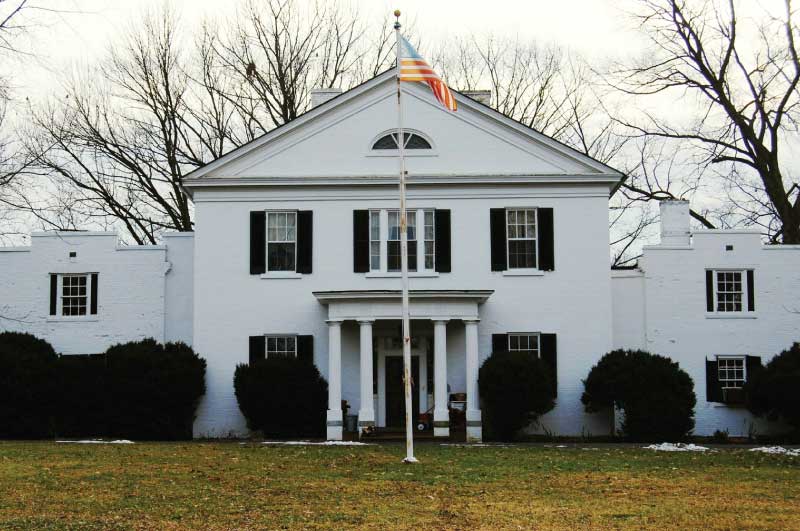


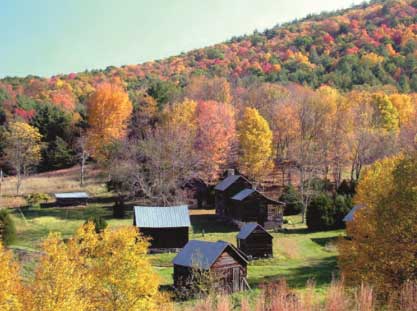







 RSS Feed
RSS Feed



